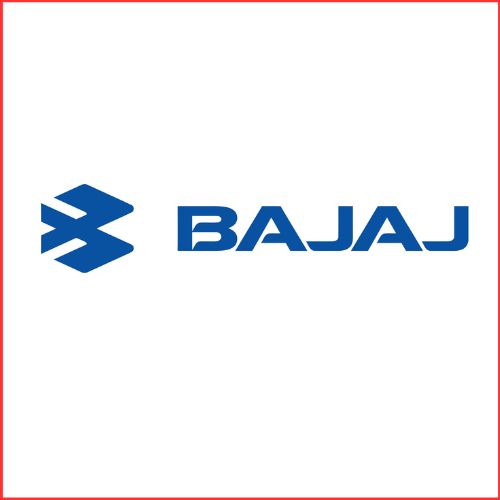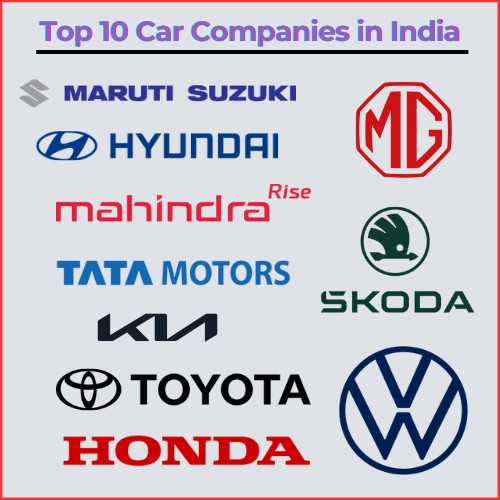| S.No. | Content |
| 1 | Introduction |
| 2 | History and Evolution of the Brand |
| 3 | Dunkin’s Products – Donuts, Coffee, Sandwiches, and Bakery Items |
| 4 | The New Restaurant Format and Menu |
| 5 | Technology Initiatives – Mobile Ordering, Rewards Program |
| 6 | Global Expansion Brings Dunkin’ Love Worldwide |
| 7 | Dunkin’s India Expansion Strategy |
| 8 | Competitor Analysis |
| 9 | Conclusion |
Introduction
Source: Icy Tales
From a single donut shop in Quincy, Massachusetts to a global powerhouse with over 12,500 locations, the Dunkin’ Donuts story epitomizes rapid growth. This article explores the history behind Dunkin’s ascent into a beloved brand serving over 3 million customers daily. We discuss key milestones driving Dunkin’s expansion as well as plans for continuing an upward trajectory that’s seen this brand beloved for donuts and coffee dominate markets from America to Asia.
History and Evolution of the Brand
Source: Designhill
In 1950, Bill Rosenberg opened the first Dunkin’ Donuts shop in Quincy, Massachusetts with a simple mission: to serve high-quality donuts and coffee quickly and affordably. Over 70 years later, Dunkin’ Donuts has evolved into one of the most recognized brands in the world, with over 12,500 locations globally.
The concept was an immediate hit – drawing customers with the irresistible smell of donuts being made fresh hourly. In 1955, Rosenberg began licensing franchises – kickstarting Dunkin’s rapid expansion across the United States and eventually internationally.
By 1973, just over 20 years from its founding, there were over 1,000 Dunkin’ Donuts stores. The key to this growth was identifying untapped markets and making strategic partnerships with companies like Host International, which brought Dunkin’ Donuts into travel plazas along major highways.
Dunkin’s Products – Donuts, Coffee, Sandwiches, Bakery Items
Source: Delish
While donuts have always been the treasure of Dunkin’s business, Rosenberg saw early on that offering high-quality coffee was key to competing with other shops popping up around the country. Customers agreed – making Dunkin’ one of the top sellers of hot and iced coffee in America today.
Dunkin’ now offers over 30 coffee varieties, including unique seasonal blends, Nitro Cold Brew, espressos, and more. Yet simple classics remain best-sellers, like Dunkin’s smooth Original Blend Coffee. Dunkin’s affinity for coffee has changed industry standards – being one of the first chains to offer delicious yet affordable coffee to-go.
Beyond donuts and coffee, Dunkin’ has expanded its menu over the years – through innovation carefully made not to detract from core offerings customers already love. Additions like breakfast sandwiches, bagels, and newer bakery items keep choices fresh. By responding to trends like high-protein and gluten-free diets, Dunkin’ maintains relevancy. Even so, classic donuts like Boston Kreme and Glazed remain just as popular today as decades ago.
Dunkin’s baked goods brilliance extends beyond donuts to muffins, bagels, and glowing morning pastries adding a well-rounded breakfast buffet. Donut innovation continues too; beyond classics, over 80 creations debut seasonally like sweet heart-shaped sprinkles for Valentine’s Day or festive fall-themed flavors. Dunkin’s coffee menu also grows more premium, now with customizable espresso drinks, creamy frozen varieties, and special roasts like Jamaican Me Crazy.
Handcrafted breakfast sandwiches on croissants or biscuits give customers satisfying midday meal options too. Yet new items only make the menu if rigorous quality testing proves they’re worthy additions. This meticulous, customer-centric approach to innovation is why over 50% of sales still come from Dunkin’s holy grails – the joyful simplicity of an old-fashioned donut and a smooth, reliable cup of coffee done right since 1950.
The New Restaurant Format and Menu
Source: Delish
While the menu has expanded, so too has the store format – fine-tuned to deliver speedy service and convenience customers best expect. Open kitchens that showcase donuts being made onsite are central fixtures. The colorful, lively decor creates an uplifting environment for grabbing coffee or a quick bite with friends.
Drive-thrus with dedicated Dunkin’ staff maintains quick throughput – getting customers their coffee fix faster than most competitors. Knowing approximately 60% of sales are made before 8 am, efficiency is built into every store’s operations.
Yet enhancements continue to provide the fastest, most consistent, and enjoyable customer experience. Dunkin’s newest “Next Generation Store” delivers just that through tap systems to prevent wasted coffee, cold beverages on demand, and even more mobile order pick-up points. Features are thoughtfully incorporated so speed and quality – the core tenets of Dunkin’s service model – are never compromised.
Dunkin’s latest “Next Generation” stores also showcase innovative menu additions like tap systems for cold brews and nitro-infused teas. Store footprints shrink via high-efficiency mobile pick-up points, freeing space for grab-and-go bakery fixtures. Dunkin’ even modernized its iconic branding with a vibrant new color scheme and typeface conveying the joy customers feel.
Format changes won’t compromise the efficient speed of service core to Dunkin’s DNA either. Crews undergo retraining to maintain throughput using the newest equipment and configurations. By retaining operational focus alongside menu and store evolution, the brand keeps giving loyal patrons the quintessential “Dunkin’” experience – just faster, fresher, and more custom than ever before.
Technology Initiatives – Mobile Ordering, Rewards Program
Source: Netguru
Dunkin’ also integrates technology into stores to make visits efficient. A dedicated Dunkin’ Mobile Ordering app allows customers to order ahead and then quickly pop in to retrieve orders without waiting in line. Customers can customize any menu item just like they would for in-store ordering. Integrating this popular app with stores required operational changes – but the conveniences it enables are well worth it for the on-the-go Dunkin’ customer.
Rewarding loyal customers is also a priority addressed through Dunkin’s DD Perks Rewards program. Customers earn points towards free beverages with each purchase made by scanning apps in stores or ordering online. Birthday treats, order-ahead features, and promotional discounts keep customers engaged – and keep them coming back to Dunkin’.
Dunkin’s technology investments cater directly to the busy, smartphone-savvy customer base. The DD Perks Rewards program recently overhauled its app-based loyalty scheme, shifting from visits-based to points-based rewards. This lets customers earn freebies faster through personalized challenges and bonus point offers. Members can also gift or pool points with others – expanding flexibility.
The upgrades boosted member signups by over 60% since launch. Dunkin’ also keeps enhancing mobile ordering capacities to manage sharp order volume growth. Customizations and rapid in-store fulfillment will remain priorities to drive app adoption. Where competitors see tech as an add-on, Dunkin’ leverages it to strategically deepen customer convenience and loyalty.
Keys to Dunkin’s Success
Source: StartupTalky
Simple, Affordable Menu: Dunkin’ builds its identity around a straightforward menu of coffee, donuts, bagels, and sandwiches at affordable price points. The simple, low-cost food and beverages make Dunkin’ an approachable daily option.
Focus on Speed & Convenience: Unlike Starbucks’ leisurely “third place” positioning, Dunkin’ proudly functions as an efficient in-and-out coffee break destination for busy patrons. Everything at Dunkin’ caters to convenience and quick service.
Franchise Model Fueled Expansion: Since pioneering franchising in the QSR space under founder William Rosenberg, Dunkin’s franchise model has enabled rapid nationwide growth. Franchisees carry the costs and local brand-building work.
Family-Friendly Brand: Dunkin’ cultivates an accessible, working-class brand identity that appeals across Middle America. Dunkin’ conveys an image as a daily treat for ordinary families, not an urban elite experience like Starbucks.
Innovation & Reinvention: Over time, Dunkin’ has introduced innovations like Coolatta drinks to update its menu to shifting preferences. Keeping core offerings relevant has maintained customer interest.
By sticking to a simple menu, low costs, speed-focused service, and leveraging franchising to rapidly expand across smaller towns, Dunkin’ built itself as the go-to daily escape for average American families seeking a quick, affordable coffee break. The blue-collar accessible brand persona effectively countered Starbucks’ higher-end ambitions.
Taking on Starbucks
Source: HuffPost
Dunkin’ has become one of America’s most popular and successful quick-service restaurant chains due to a focus on simplicity, speed, affordability, and innovation. A key factor in Dunkin’s growth has been its straightforward menu centered around coffee, donuts, bagels, and sandwiches. Unlike Starbucks, Dunkin’ does not aim to provide a cozy third place for customers to linger; instead, Dunkin’ has branded itself as an efficient, affordable grab-and-go option for a quick meal or coffee break.
Most critically, as Starbucks aggressively expanded in the 1990s and 2000s with its high-end positioning around the coffeehouse experience, Dunkin’ responded by doubling down on its quick-service, no-frills identity. While Starbucks focused on trendy urban centers to promote its “third place between work and home” atmosphere, Dunkin’ spread across smaller towns and suburbs across America, proudly calling itself a faster, cheaper coffee-to-go destination in contrast to Starbucks’ leisurely in-cafe vibe. Dunkin’s branding as an everyday escape for the average working family on a budget has emotionally resonated across its national customer base.
Global Expansion Brings Dunkin’ Love Worldwide
Source: Seeking Alpha
From early franchising success in America, Dunkin’ set its sights on global markets in the 1970s by expanding into Asia and the Middle East. That international growth has exploded since the 2000s – further enhanced by partnerships with companies like Coca-Cola that leverage vast global footprints.
Dunkin’ stores around the world customize menus slightly to cater to local tastes – like taro donuts in Thailand, Lebanese pita breakfast sandwiches, or matcha flavors in Japan. Yet the brand’s American heritage and playful vibe translate universally. Today, Dunkin’ boasts over 3,500 international locations across over 60 countries. Proving people everywhere appreciate Dunkin’s sweet, affordable treats.
Dunkin’s India Expansion Strategy
Source: IndiaRetailing
Setting its sights on South Asia, Dunkin’ sees India as its next major frontier. India’s rapidly growing middle class, youthful population, and ever-expanding appetite for Western brands make the country ripe for expansion. Its first stores opened there in 2012 – and just ten years later, Dunkin’ India aims to operate 250 locations by 2024.
However navigating India’s complex distribution networks, price-conscious consumers, varied languages, and customs present challenges. Competitor analysis also shows chains like Krispy Kreme failing to gain the traction Dunkin’ enjoys back home.
To achieve its aggressive growth plans in India, Dunkin’ gets hyper-local. Stores launch regionally to ease supply chain complexities before expanding wider. Menu innovations like paneer donuts appeal to native tastes. Affordable price points combat local inflation while mobile apps accommodate languages from Hindi to Tamil.
The brand also fine-tunes operations to run lean, despite higher ingredient costs. Training emphasizes speedy yet hospitable service catered to India’s growing on-the-go urban crowd. Though achieving success there won’t be easy, India promises the next chapter of growth in Dunkin’s story.
Competitor Analysis
Source: SWOT Hub
Though a dominant force in the U.S. and expanding abroad, Dunkin’ faces ever-growing competition in the coffee and baked goods space.
Starbucks far surpasses Dunkin’ in size globally, with over 32,000 stores worldwide fueled by specialty drinks and premium branding. Yet Dunkin’ beats Starbucks in customer loyalty and affordability in America – ties go back to value-driven middle-class patrons versus Starbucks’ higher-end image.
Meanwhile, Krispy Kreme competes directly on donuts but has failed to achieve Dunkin’s dominance, with only around 1,400 global locations. Lacking Dunkin’s food diversity beyond sweets has limited Krispy Kreme’s growth.
Fast-food chains like McDonald’s, Wendy’s, and Tim Hortons also increasingly offer bakery items and specialty coffees. Yet customers see these chains as lower-quality quick bites versus Dunkin’s affordable indulgence positioning.
In growth markets like India and China, Dunkin’ competes with similar Western chains as well as local cafes. Most menus are dominated by big domestic players who customize extensively to local tastes. Making inroads in these markets requires mastering sourcing, pricing, and customization – no easy feat with formidable incumbents already in place.
While competition is steep, Dunkin’ perfected efficiency, speed, and scale. By staying true to brand equity around donuts, first-class coffee, and customer loyalty since 1950, this beloved brand continues winning over generations of fans globally. With nimble innovation and operations tuned regionally, Dunkin’s future looks bright against even the steepest competition.
Conclusion
As Dunkin’ continues expanding globally, it stays true to the values that have defined its success – affordability, speedy service, and operational excellence in delivering a consistent yet modernized experience. Over 70 years since its founding, Dunkin’s focus remains on perfecting guests’ enjoyment around simple pleasures – a tasty donut and fresh coffee. This commitment to quality and innovation around its core offerings will keep customers coming back for generations to come across Dunkin’s 12,500+ global locations and counting.
With smart localization and efficient operations, Dunkin’ can overcome unique complexities in India to carve out a niche. However, significant growth requires besting strong domestic chains like CCD on price and familiarity. Though inherently risky, India’s explosive potential makes the heavy investment worthwhile if Dunkin’ can sustain brand cachet around quality yet cost-effective indulgence. If achieved, India may prove Dunkin’s next billion-dollar market and gateway for vast untapped Asian growth. It won’t be effortless, but with strategic partnerships and commitment, Dunkin’ can make its Indian underdogs rise.














